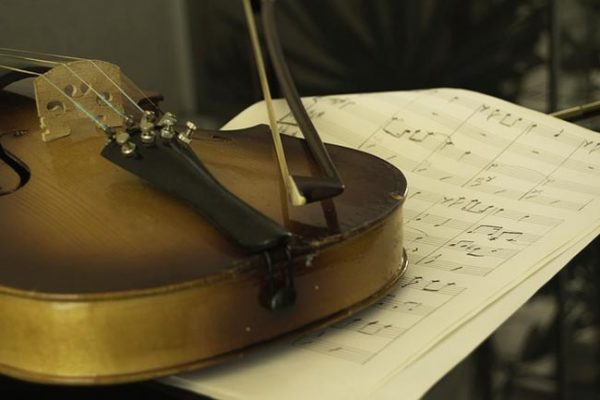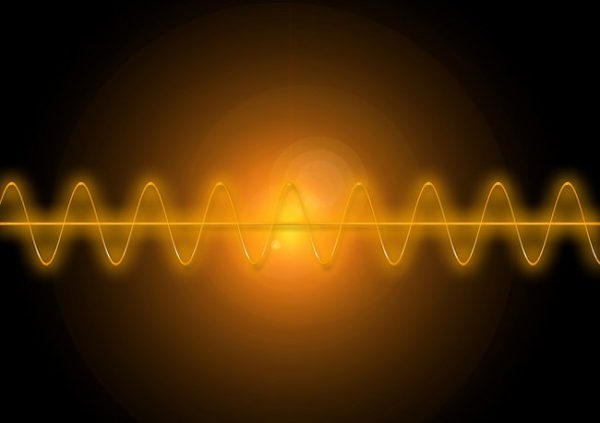432 Hz, otherwise known as Verdi’s A, was the music tuning standard prior to today’s tuning of 440 Hz. It is widely considered a superior tuning that makes music more pleasant to listen to. It is also said to have a positive influence on the mind and body due to its relationship with our planet.
432 Hz has been shown to reduce anxiety and lower blood pressure. 432 Hz music is said to help release emotional blockages, increase mental clarity, unlock intuition and align you with the universe.
This special frequency is at the heart of nature, our biology, and DNA, and is affectionally referred to as the ‘heartbeat of the planet’.
Many consider 432 Hz to be a superior tuning that is not only more pleasant to listen to, but also has a positive influence on the mind and body.
Different music invokes different emotions.
Crooning love ballads make us feel romantic (or sick). Dance music makes us want to throw some shapes. Blues music leaves us reminiscing about times past, and orchestral work by the likes of Mozart can move our very being.
We know there’s something to the style, the tempo, the melody, and the lyrics of our favorite songs that affects how we feel. But what is it in music that plays with our emotions? And how is our mood affected post listening?
It’s the frequency of the instruments and the sounds those frequencies make that cause an emotional reaction. But the overall tuning of the music, arguably has the most profound and often unnoticed effect.
Unfortunately, the “standard” tuning frequency used in most modern music may not be a positive one, or at least not as positive as it could be.
MODERN MUSIC TUNING – 440 Hz
From concert halls to your favorite streaming service, most music you hear today is tuned to the 440 Hz standard. Yet this tuning is barely a hundred years old.
For thousands of years, from Egypt to Greece, a different frequency was used.
As shown by musician Brian T. Collins, the Schiller Institute, and various physicists and scientists, the 440 Hz frequency not only lacks mathematical or scientific significance, it’s actually out of tune with the natural world and wider universe.
For this reason, many believe that the 440 Hz pitch doesn’t just make music less pleasant and enjoyable, but actually has a negative effect on our mind, our consciousness, our natural energies and vibrations, and our spirituality.
It is argued that the 440 Hz tuning keeps us closed off from a higher sense of meaning and disconnected from our surroundings.
If that’s the case, then why is 440 Hz the modern standard?
CLICK ON ABOVE GRAPHIC FOR MORE INFORMATION
A CHANGE OF TUNE
It all started in the late 19th century with a man named J.C. Deagan.
Using his wealthy connections, Deagan not only began manufacturing musical instruments in 440 Hz, he began lobbying in Europe and the United States to adopt the frequency as the standard concert pitch.
Deagan’s first success came in 1917, when the American Federation of Music adopted 440 Hz. By 1922, it had become the standard pitch in the United States.
In the 1940s, 440 Hz began spreading the world over, and in 1953 the International Organization of Standardization established it as the international, or ISO 16, standard.
To this day, it remains the music industry standard.
The obvious question is why a manufacturer of musical instruments would want to establish a new standard pitch?
Follow the money, as they say.
In most cases, you can’t simply change the tuning of an instrument when it has been designed to be played at another frequency. It’s possible, but it won’t sound right – and can even be damaging to the instrument.
In short, the change in pitch would have forced thousands, if not millions, of new instruments to be purchased. And you can bet this was very lucrative for Deagan.
While some claim 440 Hz was introduced for more conspiratorial reasons, like as a form of government propaganda and mind control, it’s more likely that it was simply a way for a businessman to make more money.
432 Hz – THE ORIGINAL TUNING
The tuning used before 440 Hz became the standard, was 432 Hz.
In fact, researcher and musician Ananda Bosman has shown that instruments uncovered from ancient Egypt used this tuning.
Then there are the Stradivarius violins, which were built throughout the late 17th and early 18th centuries and today are worth millions, owing to their superior construction and sound.
These wonderful instruments were tuned to 432 Hz, and scientists have now found out why.
Using software normally reserved for speech analysis, researchers found that violins from the two Cremonese luthiers mimic aspects of the human voice, a feature they argue adds to the instruments’ exceptional musical quality.
This gives credence to the fact that 432 Hz resonates with humans and the world around us; something we will explore in greater detail in the next section.
CLICK ON ABOVE GRAPHIC FOR MORE INFORMATION
SUPPORTED BY MUSICAL GENIUSES
The natural 432 Hz vibration was used by Mozart and Italian opera composer, Giuseppe Fortunino Francesco Verdi.
In fact, Verdi once wrote to the Congress of Italian Musicians to suggest 432 Hz as the concert standard. Here’s what he wrote:
“Since France has adopted a standard pitch, I advised that the example should also be followed by us; and I formally requested that the orchestras of various cities of Italy, among them that of the Scala [Milan], to lower the tuning fork to conform to the standard French one.”
“If the musical commission instituted by our government believes, for mathematical exigencies, that we should reduce the 435 vibrations of French tuning fork to 432, the difference is so small, almost imperceptible to the ear, that I associate myself most willingly with this.”
Verdi was unsuccessful.
432 Hz wasn’t just something reserved for Western composers either.
Sound researcher Jamie Buturff, with the help of a Korg tuner, found that the singing bowls and other instruments of Tibetan monks were tuned to 432 Hz.
Some also believed that the instruments of the ancient Greek god of music, Orpheus, were tuned to this harmonic frequency.
Why exactly did this frequency have such long reach, stretching through time and around the globe?
Perhaps it’s due to the mathematical consistency 432 Hz has with the vibrations of the natural universe.
After all, Verdi’s endorsement of 432 Hz was also backed by physicists and scientists Felix Savart, Joseph Sauveur, and Bartolomeo Grassi Landi.
It’s relation to the Schumann Resonance is just one example of the significance of 432 Hz.
432 Hz – THE HEARTBEAT OF THE PLANET
Named after Winfried Otto Schumann, the German physicist who discovered the theory, the Schumann Resonance refers to the electromagnetic frequencies between 7.86 and 8 Hz activated by lightning in the area between the ionosphere and the surface of the Earth.
These resonances are essentially our planet’s heartbeat.
By working from a starting point of 8 Hz, we find note C at either 128 or 256 Hz, depending on the scale we use.
And note A? We’d find that at 432 Hz, otherwise known as “Verdi’s A”.
In short, 432 Hz is in tune with the Earth itself.
We don’t find any such significance with 440 Hz.
CLICK ON ABOVE GRAPHIC FOR MORE INFORMATION
432 Hz BENEFITS
432 continues to show up wherever we look, including at ancient sites like the Great Pyramid of Giza, Stonehenge, and Sri Yantra.
As noted by Scottish born composer Brian T. Collins:
“From my own observations, some of the harmonic overtone partials of A=432 Hz 12T5 appear to line up to natural patterns and also the resonance of solitons.”
“Solitons need a specific range to form into the realm of density and span from the micro to the macro cosmos. Solitons are not only found in water mechanics, but also in the ion-acoustic breath between electrons and protons.”
Brian has also documented 432 Hz’s relation to the golden mean, Phi, as it vibrates in tune with nature, our biology and DNA, and even our consciousness.
432 Hz is considered to have the potential to synchronize both hemispheres of our brain: the logical and analytical left brain and the creative and intuitive right brain. This creates what scientists call “whole brain synchronization”, maximizing our potential as thinkers, artists, and spiritual beings.
Other music scholars have revealed further compelling evidence that 440 Hz is not ideal:
In her book, Intervals Scales Tones and the Concert Pitch C=128hz, Maria Reynolds showed that pitches higher than the scientific C prime of 128 Hz, which coincides with an A of 432 Hz, create a disconnect between our bodies and consciousness, as well as social friction with the people around us.
That means 440 Hz is potentially contributing to the internal and external strife of the modern world.
Unbeknown to us, it is smothering our intuition, hindering our creativity, cutting us off from our spirituality, and making us more antisocial.
RETURNING TO THE 432 Hz STANDARD
Between 432 Hz’s mathematic and scientific significance and its positive effects on the mind and body, it may seem obvious that we should revert back to this ancient tuning and ditch the modern 440 Hz.
Many are advocating for this change. Indeed, to paraphrase Richard Huisken, Founder of the ‘Back to 432 Hz’ Committee:
“Music at 432 Hz is nicer for hearing, softer, brighter and more beautiful than music in 440 Hz. Though the untrained ear may not hear this difference; it can be felt.”
But changing the standard tuning isn’t that easy.
Consider all the red tape and bureaucratic nonsense there is to cut through with music academies and composers. And then there’s the production of new instruments.
Fortunately, that doesn’t mean you can’t introduce more 432 Hz music to your life.
And why wouldn’t you? It has the power to bring more harmony in your life, to realign you with the Earth.
After all, we humans are intrinsically part of nature and benefit both physically and spiritually when closely connected with nature.
Over time, listening to beautiful music created at 432 Hz tuning increases your sense of well-being and connectedness to the wider world.
You might find it engaging your intuition, increasing your creativity, sharpening your intellect, and even expanding your consciousness.
Many describe 432 Hz music as an internal experience, as opposed to the external sensation felt with 440 Hz. It is an all-consuming, innate connection, a more enjoyable, pleasant listening experience.
174 Hz Audio Promotional Examples
285 Hz Audio Promotional Examples
396 Hz Audio Promotional Examples
417 Hz Audio Promotional Examples
432 Hz Audio Promotional Examples
528 Hz Audio Promotional Examples
639 Hz Audio Promotional Examples
741 Hz Audio Promotional Examples
852 Hz Audio Promotional Examples
963 Hz Audio Promotional Examples
CLICK ON ABOVE GRAPHIC FOR MORE INFORMATION
Want to learn more about Solfeggio Frequencies – Six Tone Music Scale – then just click to find out.
Want to learn more about The Human Psyche – Mind Or Soul – Center Of Emotions – then just click to find out.
Payseur Family History
Fritz Springmeier – Bloodlines of Illuminati
The Rothschild Dynasty
The Disney Story
The above four links open a new tab in Louis Payseur’s site.
Well-Being & CBD Oil – Curated Presentation
Shopping & Clothing – Curated Presentation
Accessories – Curated Presentation




















